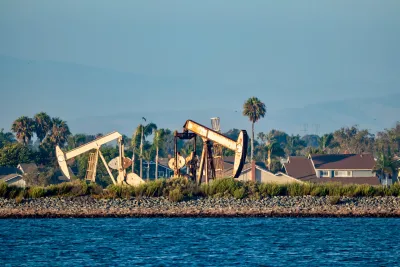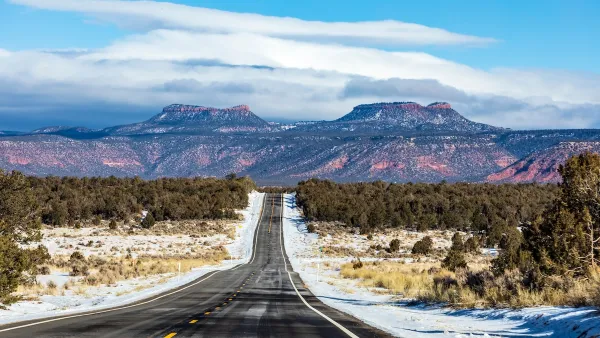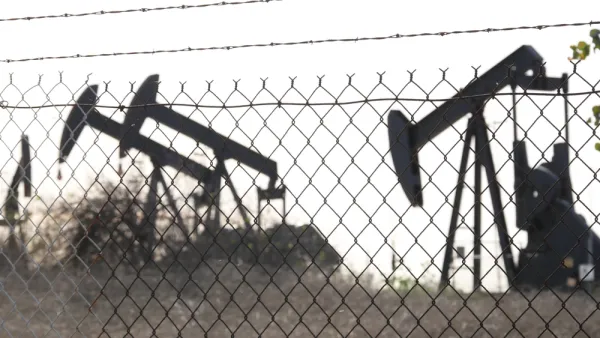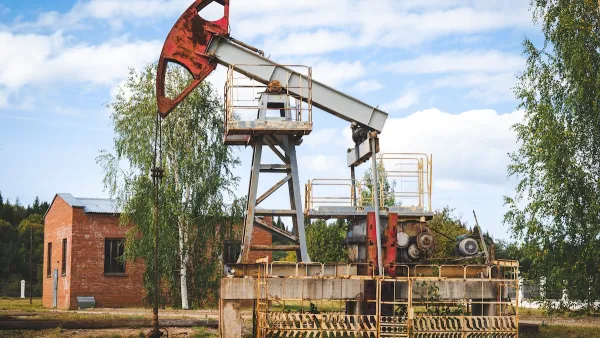The new rules would raise more money for cleanup operations and bring more revenue to oil-producing states, but are a far cry from fulfilling President Biden’s promise to end extraction on public lands.

Changes to regulations governing oil drilling on public lands proposed by the Biden administration could “dramatically increase the operators’ financial obligations, boost the royalties that companies pay and tighten permissive leasing regulations,” writes Nick Bowlin in High Country News.
“Many Western environmental advocates and public officials praised the proposal as the much-needed and long-overdue restructuring of a system that has always favored industry.” Bowlin notes that the financial assurance reforms included in the proposal are “a major deal,” with the new rules raising the bonding level for new leases and the state-level blanket bond to combat stagnant bonding levels that no longer cover the cost of site cleanup. “A 2019 report by the U.S. Government Accountability Office found that 99% of federal oil and gas leases have bonds that would be unable to pay for the full cost of cleanup.”
The proposal also raises the percentage oil companies must give to states and raises the minimum bid for public-land drilling lease auctions.
“Some climate advocates, however, said that an administration that calls itself a climate champion should be working to actively phase out public land oil and gas production, rather than attempting to reform it.” Bowlin points out that President Biden ran on a promise of ending oil drilling on public lands, “But during his first two years in office, his administration approved more oil and gas permits than former President Donald Trump did in the same time frame.”
FULL STORY: New public-land drilling rules would overhaul the Western oil industry

National Parks Layoffs Will Cause Communities to Lose Billions
Thousands of essential park workers were laid off this week, just before the busy spring break season.

Retro-silient?: America’s First “Eco-burb,” The Woodlands Turns 50
A master-planned community north of Houston offers lessons on green infrastructure and resilient design, but falls short of its founder’s lofty affordability and walkability goals.

Delivering for America Plan Will Downgrade Mail Service in at Least 49.5 Percent of Zip Codes
Republican and Democrat lawmakers criticize the plan for its disproportionate negative impact on rural communities.

Test News Post 1
This is a summary

Test News Headline 46
Test for the image on the front page.

Balancing Bombs and Butterflies: How the National Guard Protects a Rare Species
The National Guard at Fort Indiantown Gap uses GIS technology and land management strategies to balance military training with conservation efforts, ensuring the survival of the rare eastern regal fritillary butterfly.
Urban Design for Planners 1: Software Tools
This six-course series explores essential urban design concepts using open source software and equips planners with the tools they need to participate fully in the urban design process.
Planning for Universal Design
Learn the tools for implementing Universal Design in planning regulations.
EMC Planning Group, Inc.
Planetizen
Planetizen
Mpact (formerly Rail~Volution)
Great Falls Development Authority, Inc.
HUDs Office of Policy Development and Research
NYU Wagner Graduate School of Public Service





























